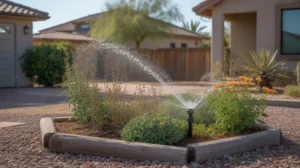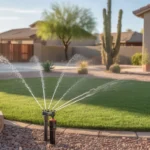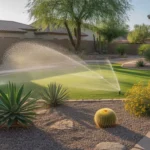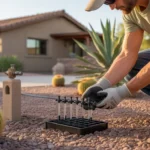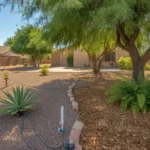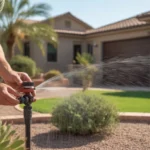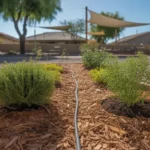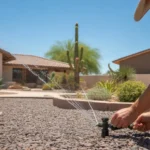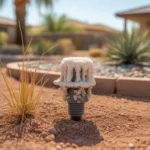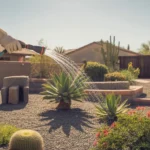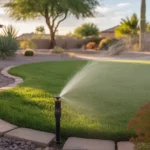Keeping perennial beds lush and vibrant in the Southeast Valley takes smart irrigation strategies. One key upgrade is installing high-efficiency sprinkler heads designed for the unique needs of perennials. These advanced nozzles deliver targeted, low-volume coverage that promotes deep root development while minimizing runoff and evaporation. Here’s how to choose and use high-efficiency heads to help your perennials thrive.
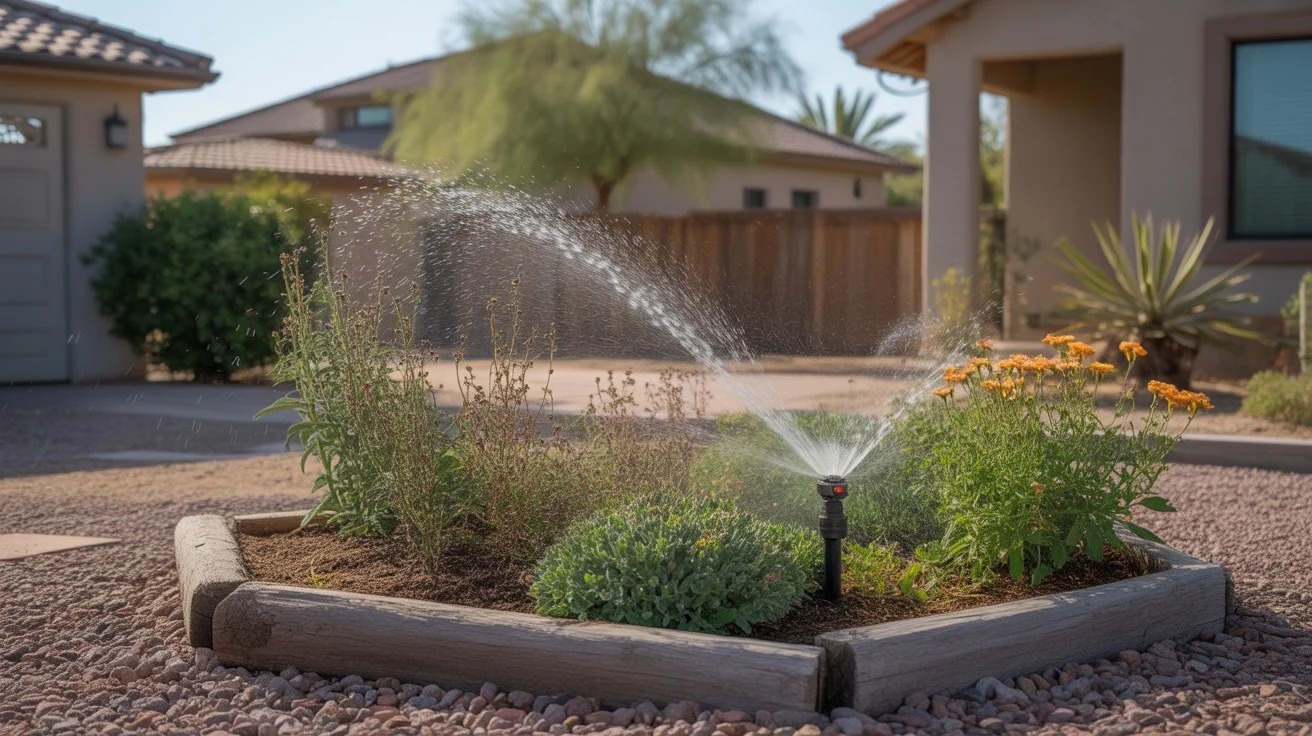
Matching Sprinkler Heads to Perennial Needs
Unlike turfgrass that benefits from frequent, shallow watering, most perennials prefer deeper, less frequent irrigation. High-efficiency sprinkler heads are engineered to deliver larger droplets at a slower rate, allowing water to penetrate deeper into the soil profile. This encourages perennials to develop extensive root systems that can better withstand heat and drought stress.
When selecting high-efficiency heads for perennial beds, look for models with adjustable arc and radius settings. This allows you to fine-tune the spray pattern to match the shape and size of each planting area, minimizing overspray onto hardscapes or neighboring plants. Multi-stream rotary nozzles are a popular choice for their wind-resistant, low-trajectory streams that reduce misting and evaporation.
It’s also important to consider the precipitation rate of each head, measured in inches per hour. Perennial beds typically require sprinkler heads with rates of 0.5 to 1.0 inches per hour for optimal soil moisture without oversaturating the root zone. Avoid heads with higher precipitation rates that can lead to runoff and shallow rooting.
Zoning Perennials for Efficient Coverage
To maximize the benefits of high-efficiency sprinkler heads, group perennials with similar water needs on the same valve or zone. This allows you to tailor the irrigation schedule and run times to meet the specific requirements of each plant type without overwatering or underwatering individual specimens.
For example, you might place drought-tolerant perennials like penstemon, gaillardia, and desert marigold on one zone that runs less frequently and for shorter durations. Moisture-loving perennials such as daylilies, canna lilies, and bee balm can be grouped on a separate zone with slightly longer run times to maintain consistent soil moisture.
When laying out sprinkler heads in perennial beds, strive for head-to-head coverage where the spray radius of one head reaches the adjacent head. This ensures even water distribution across the entire planting area, eliminating dry spots that can stress plants. Avoid placing heads too close to plant bases where the concentrated spray can cause crown rot or fungal issues.
Calibrating High-Efficiency Heads for Optimal Output
After installing high-efficiency sprinkler heads, it’s crucial to calibrate the system to deliver the right amount of water for your specific soil type and plant mix. Place catch cans or rain gauges throughout the perennial bed and run the system for a set period, such as 15 minutes. Measure the water collected in each container to determine the precipitation rate and distribution uniformity.
Aim for a precipitation rate that allows water to soak in without generating runoff, typically around 0.5 inches per hour for Southeast Valley soils. If you observe puddling or excess water in the catch cans, reduce the run time or adjust the nozzle to a lower flow rate. If the soil remains dry below the surface, increase the run time incrementally until you achieve the desired penetration depth.
Keep in mind that perennial water needs fluctuate throughout the growing season based on weather conditions and plant growth stages. Monitor soil moisture regularly using a probe or moisture sensor and adjust the irrigation schedule as needed to maintain consistent hydration without waterlogging the root zone. Most perennials benefit from deep, infrequent watering that allows the soil to dry slightly between cycles.
Combining High-Efficiency Heads with Other Water-Wise Practices
While high-efficiency sprinkler heads are a powerful tool for optimizing perennial irrigation, they work best when paired with other water-conserving strategies. Top-dressing perennial beds with a 3- to 4-inch layer of organic mulch helps retain soil moisture, moderate temperature fluctuations, and suppress water-stealing weeds. As the mulch breaks down, it also enhances soil structure and fertility for healthier plant growth.
Incorporating drip irrigation lines beneath the mulch provides additional targeted watering for perennials with higher moisture needs or those located in hot, sunny microclimates. Inline drip tubing with pre-installed emitters applies water directly to the root zone, eliminating overspray and reducing evaporation. Check out our article on Pro Tips on Drip Irrigation for more details on integrating drip lines into perennial beds.
Finally, selecting perennials well-adapted to the Southeast Valley’s arid climate and soil conditions is key to creating a water-wise landscape. Native plants like penstemon, desert marigold, and globe mallow have evolved to thrive with minimal supplemental irrigation once established. They make excellent companions for high-efficiency sprinkler systems, requiring less frequent watering while still providing vibrant color and texture.
By combining high-efficiency sprinkler heads with smart zoning, moisture monitoring, and xeriscaping principles, you can keep your perennial beds lush and vibrant while conserving the Southwest’s most precious resource. With a little planning and calibration, these advanced irrigation tools will help your perennial pals rest easy all season long.

